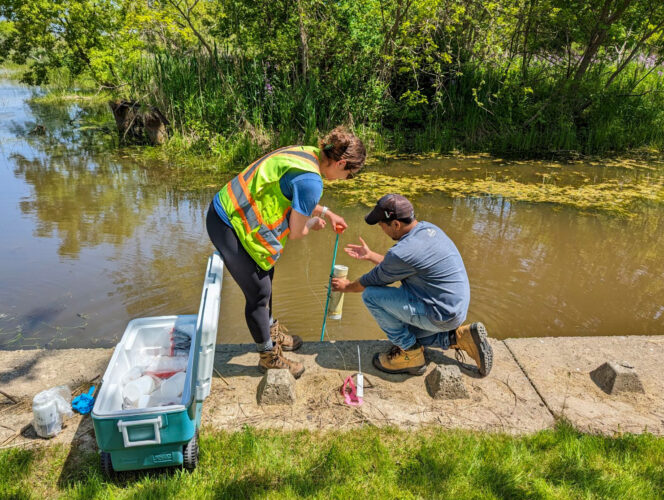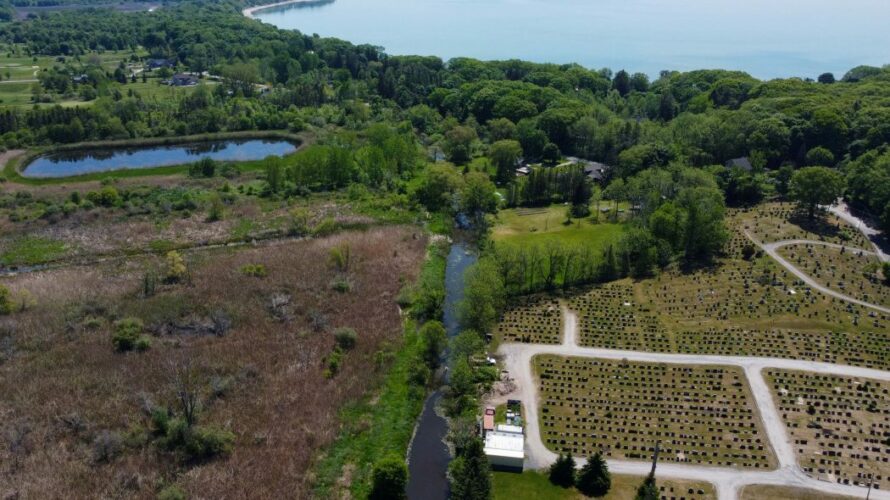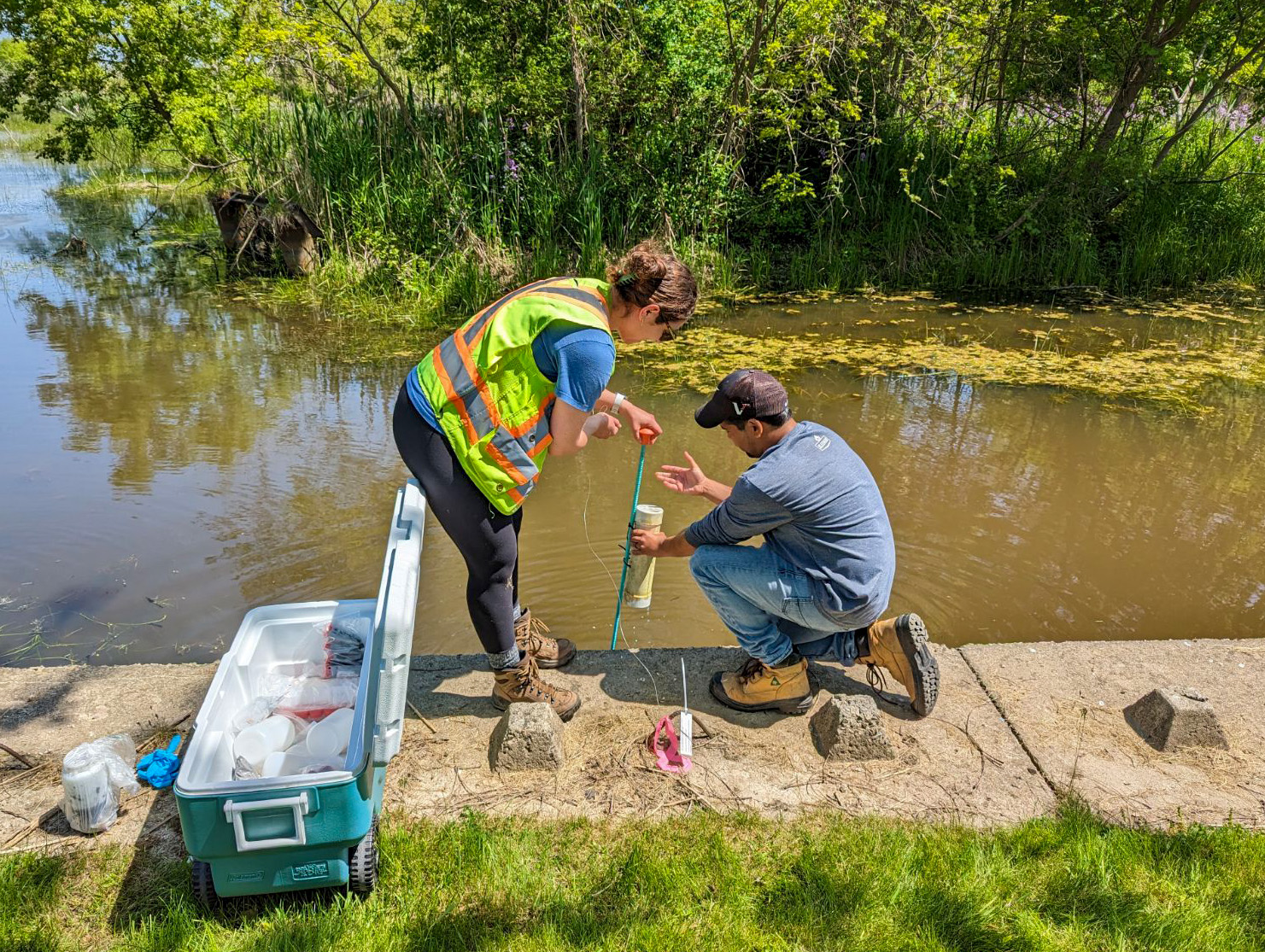A team of Brock researchers is gathering samples at the Wignell Drain in Port Colborne this summer as part of a study on factors contributing to algae blooms, which can be toxic to humans.
Vaughn Mangal, Assistant Professor in the Department of Chemistry, and Kelly Biagi, Assistant Professor in the Department of Earth Sciences, are collaborating with the Niagara Peninsula Conservation Authority (NPCA) and local residents on the project.

Brock researchers Kelly Biagi and Vaughn Mangal are gathering samples from the Wignell Drain near Lakeshore Road in Port Colborne to examine contributing factors of algae blooms.
“Algae blooms are a prevalent and expanding issue throughout southern Ontario, primarily as a result of agricultural activity,” says Biagi, whose expertise is in hydrology. “Persistent algae blooms negatively impact lake and river ecosystems as they lower dissolved oxygen concentrations in water, making it difficult for other plant and aquatic species to survive.”
Emptying into Lake Erie at Lorraine Bay, Wignell Drain, also known as Branch Drain #1, serves an area of 14.8 hectares in Port Colborne and has raised environmental concerns among local residents for years.

Mangal and Biagi developed a research project to examine how nutrients and contaminants move from land to water in an agriculturally dominated watershed in response to community outreach last December. Their goal is to understand the general hydrological and chemical patterns in the Wignell Drain and highlight solute transport from surrounding hotspots.
“Following a radio interview about Brock research into how agriculture-related practices impact streams in the Kawartha Lakes and Durham Region, a resident of Port Colborne contacted me,” says Mangal. “He was concerned about the long-term history of the water quality in the drain, and how agricultural and recreational activities around the watersheds are affecting nutrients and metals in the drain.”
The partnership between the NPCA, the local community and Brock faculty and students laid the foundation for a successful field season for the research team.
Co-ordinating the field work to take place every other week, and with rain events, Mangal, Biagi and four Brock students have been working throughout the spring and summer to collect and analyze water quality and contaminant data to be able to pinpoint problematic areas, identify general characteristics of chemical changes along Wignell Drain and determine the main source of water to the drain.
In addition to soil and water sampling, the team is collecting aquatic benthic macroinvertebrates. Because these specimens live and eat off sediment in a stream, they are useful for examining contaminants, insecticide concentrations and changes in water quality.
The team has established several sampling sites along the Wignell Drain to track water and contaminant movement in a linear pattern from upstream to the outlet in Lorraine Bay. Local residents living near the 823-metre open channel drain have also granted property access for sampling from groundwater wells.
“Once the data is analyzed, we’ll have a better idea of how to inform remedial activities to improve the water quality in the Wignell Drain and ultimately, the outlet into Lorraine Bay,” says Biagi. “Our findings may also lead to more targeted studies to minimize pollution in this drain.”
Fieldwork at the drain sites will continue through August. The team hopes the preliminary results of the study will be ready to share by summer 2024 and plans to continue collecting samples in coming years.
Vaughn Mangal is an assistant professor in the Department of Chemistry at Brock University. He completed his PhD in environmental and Life Sciences from Trent University before continuing his postdoctoral studies at the University of Toronto Scarborough. His research focuses on understanding the mechanisms that control how contaminants move through the environment after disturbances. His work also focuses on how algae impact contaminant transport during algae blooms.









